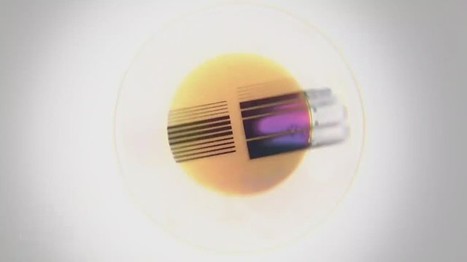From electrons to ions
Simply put, the memristor could mean the end of electronics as we know it and the beginning of a new era called "ionics".
The transistor, developed in 1947, is the main component of computer chips. It functions using a flow of electrons, whereas the memristor couples the electrons with ions, or electrically charged atoms.
In a transistor, once the flow of electrons is interrupted by, say, cutting the power, all information is lost. But a memristor can remember the amount of charge that was flowing through it, and much like a memory stick it will retain the data even when the power is turned off.
This can pave the way for computers that will instantly turn on and off like a light bulb and never lose data: the RAM, or memory, will no longer be erased when the machine is turned off, without the need to save anything to hard drives as with current technology.
But memristors have another fundamental difference compared with transistors: they can escape the boundaries of binary code.
Research and publish the best content.
Get Started for FREE
Sign up with Facebook Sign up with X
I don't have a Facebook or a X account
Already have an account: Login
Everything from new developments and discoveries in the Technology world: science, ICT, medicine, pharma...
Curated by
Gust MEES
 Your new post is loading... Your new post is loading...
 Your new post is loading... Your new post is loading...
|











From electrons to ions
Simply put, the memristor could mean the end of electronics as we know it and the beginning of a new era called "ionics".
The transistor, developed in 1947, is the main component of computer chips. It functions using a flow of electrons, whereas the memristor couples the electrons with ions, or electrically charged atoms.
In a transistor, once the flow of electrons is interrupted by, say, cutting the power, all information is lost. But a memristor can remember the amount of charge that was flowing through it, and much like a memory stick it will retain the data even when the power is turned off.
This can pave the way for computers that will instantly turn on and off like a light bulb and never lose data: the RAM, or memory, will no longer be erased when the machine is turned off, without the need to save anything to hard drives as with current technology.
But memristors have another fundamental difference compared with transistors: they can escape the boundaries of binary code.